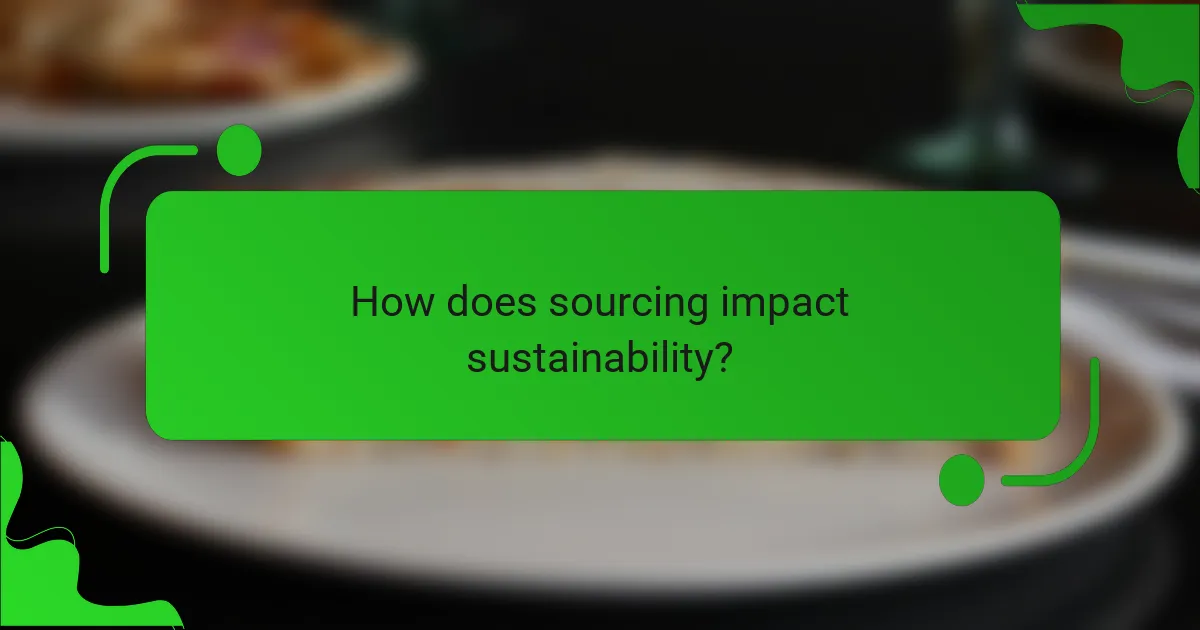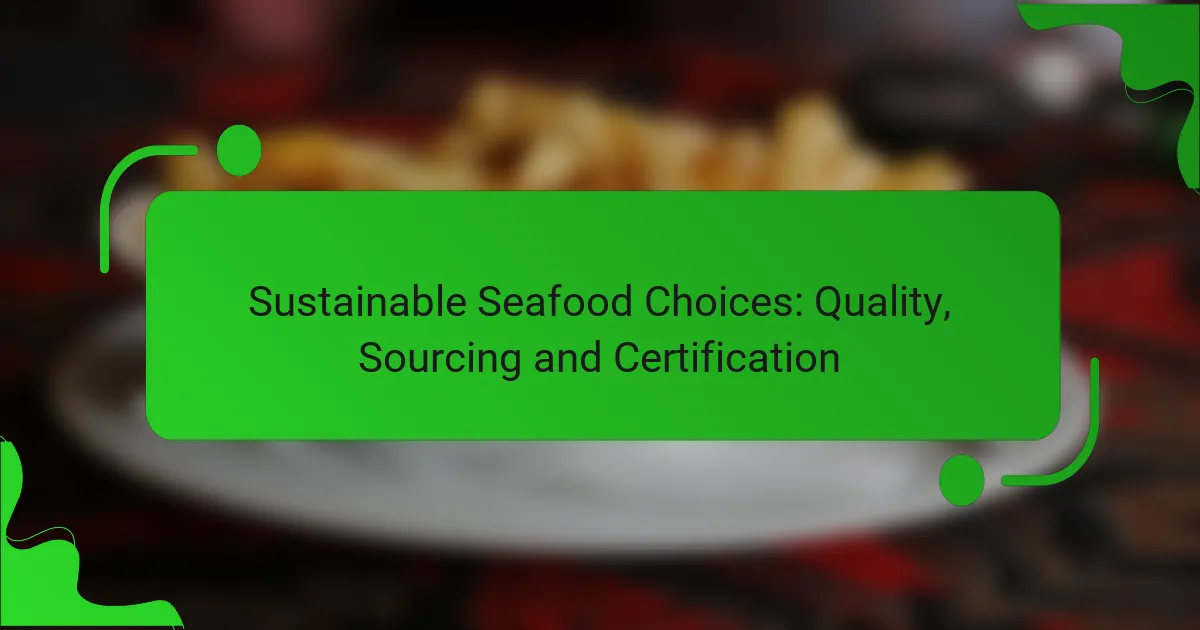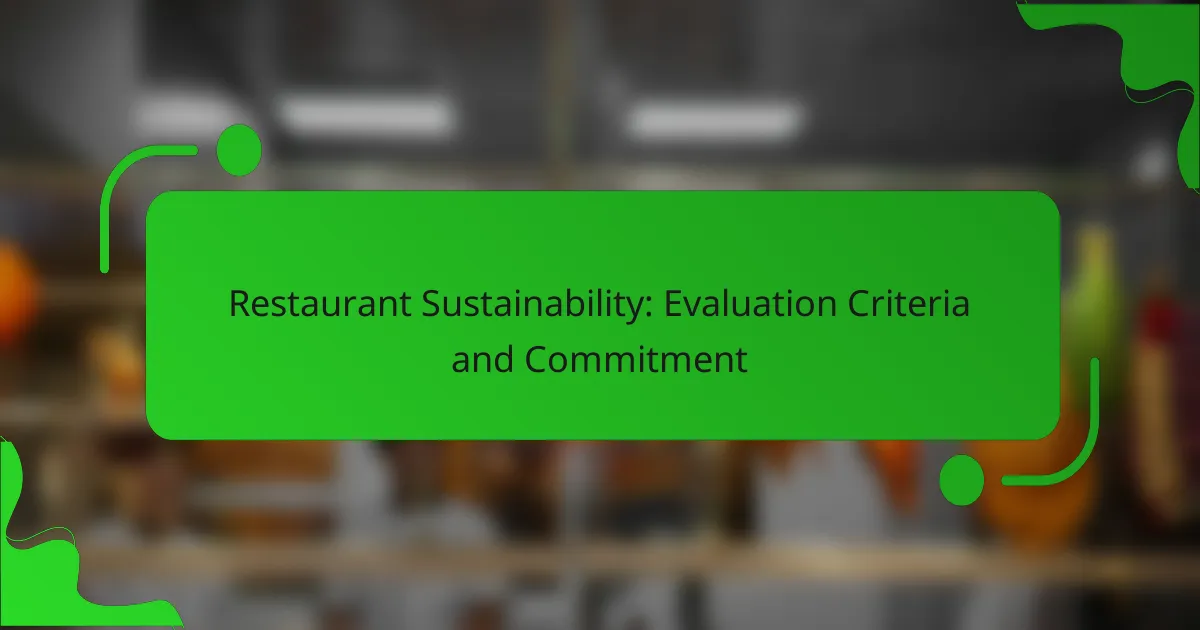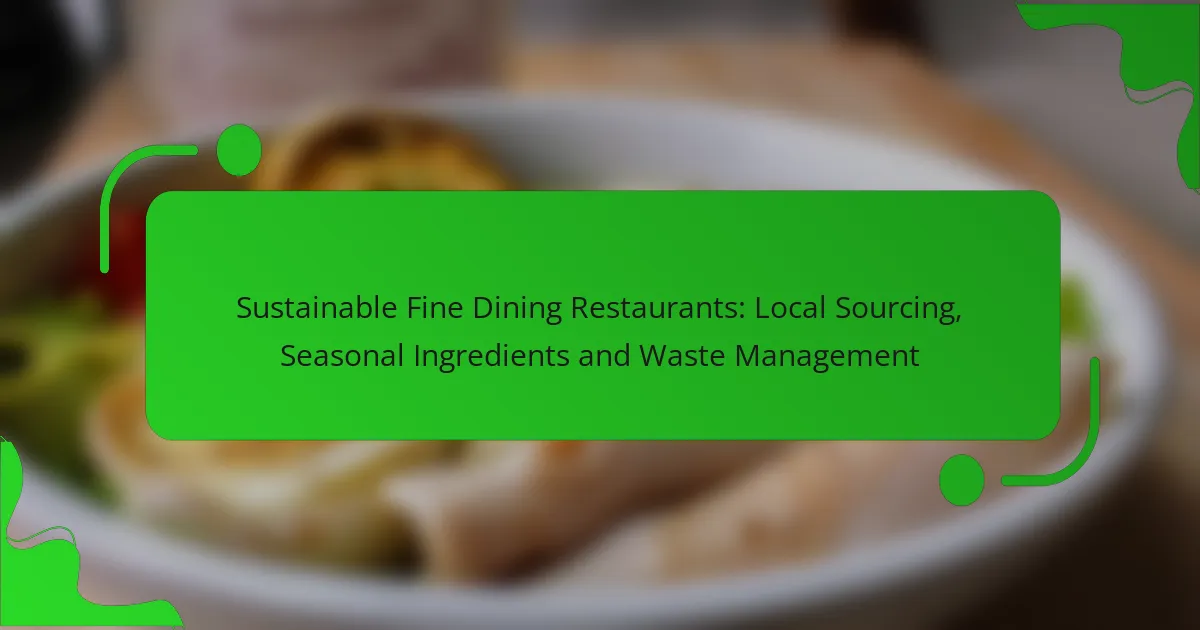Choosing sustainable seafood is essential for maintaining healthy ocean ecosystems and ensuring the longevity of fish populations. In Los Angeles, consumers can find seafood that meets rigorous environmental and social standards, often backed by certification from reputable organizations. By assessing factors such as freshness and appearance, individuals can enjoy high-quality seafood while making responsible choices that benefit both their health and the planet.

What are sustainable seafood choices in Los Angeles?
Sustainable seafood choices in Los Angeles refer to fish and shellfish that are sourced in a way that maintains healthy populations and ecosystems. These options are often certified by recognized organizations to ensure they meet environmental and social standards.
Wild-caught salmon
Wild-caught salmon is a popular sustainable choice, particularly from Alaskan fisheries that adhere to strict management practices. Look for salmon that is certified by the Marine Stewardship Council (MSC) to ensure it is harvested responsibly.
When purchasing, consider the seasonality of wild salmon, as certain types are more abundant at different times of the year. Fresh, wild-caught salmon typically has a richer flavor and firmer texture compared to farmed varieties.
Farmed shrimp
Farmed shrimp can be a sustainable option if sourced from operations that follow best practices in aquaculture. Look for certifications like the Best Aquaculture Practices (BAP) or the Aquaculture Stewardship Council (ASC) to ensure environmentally friendly farming methods.
Be cautious of shrimp farmed in regions with poor environmental regulations, as these can contribute to habitat destruction and pollution. Opt for shrimp that is raised in systems that minimize chemical use and promote biodiversity.
Pacific sardines
Pacific sardines are a highly sustainable seafood choice due to their fast growth rates and high reproductive capacity. They are often caught using methods that have minimal impact on the environment, making them a responsible option for consumers.
These small fish are rich in omega-3 fatty acids and can be enjoyed fresh, canned, or smoked. Look for sardines that are certified by the MSC to ensure they are sourced sustainably.
Alaskan pollock
Alaskan pollock is another sustainable seafood choice, primarily sourced from well-managed fisheries in the North Pacific. It is often used in products like fish sticks and imitation crab, making it widely accessible.
When buying Alaskan pollock, check for MSC certification to confirm that it is harvested in a way that supports healthy fish populations and ecosystems. This fish is versatile and can be prepared in various dishes.
U.S. farmed tilapia
U.S. farmed tilapia can be a sustainable option when sourced from responsible farms that adhere to environmental standards. Look for certifications such as BAP or ASC to ensure that the tilapia is raised in a sustainable manner.
Farmed tilapia is known for its mild flavor and affordability, making it a popular choice among consumers. Be mindful of the farming practices, as some operations may still have negative environmental impacts if not managed properly.

How to assess seafood quality?
Assessing seafood quality involves evaluating freshness, texture, smell, color, and overall appearance. These factors help ensure that the seafood is safe to eat and has optimal flavor and nutritional value.
Freshness indicators
Freshness is a key indicator of seafood quality. Look for seafood that is sold on ice or kept at a temperature below 4°C (39°F). If purchasing whole fish, check for clear, bulging eyes and bright red gills, which signal freshness.
Additionally, consider the time since the catch. Seafood that has been caught and processed within a day or two is generally of higher quality than that which has been frozen or stored for extended periods.
Texture and smell
The texture of seafood should be firm and resilient. When pressed, fresh fish should spring back rather than leave an indentation. Soft or mushy textures can indicate spoilage.
Smell is another crucial factor; fresh seafood should have a mild, ocean-like scent. A strong, fishy odor is a sign that the seafood may be past its prime and should be avoided.
Color and appearance
Color can vary by species, but fresh seafood typically has vibrant, natural hues. For example, fish should have bright, shiny scales and a moist appearance without any discoloration or dullness.
Shellfish should be tightly closed or close when tapped, while shrimp should have a translucent appearance. Any signs of browning or dryness can indicate that the seafood is no longer fresh.

Where to source sustainable seafood in Southern California?
In Southern California, sustainable seafood can be sourced from various local markets, community-supported fisheries, and online delivery services. Each option offers unique benefits and considerations for consumers looking to make environmentally responsible choices.
Local fish markets
Local fish markets are excellent places to find fresh, sustainable seafood. Many of these markets prioritize sourcing from local fishermen who adhere to sustainable practices, ensuring that the seafood is both fresh and responsibly harvested.
When visiting a fish market, ask about the sourcing practices and certifications of the seafood. Look for labels like Marine Stewardship Council (MSC) or Seafood Watch recommendations to ensure you are making a sustainable choice.
Community-supported fisheries
Community-supported fisheries (CSFs) allow consumers to buy shares of seafood directly from local fishermen. This model supports sustainable fishing practices and provides consumers with fresh, seasonal seafood.
Joining a CSF typically involves a subscription fee, which can vary based on the amount and type of seafood offered. This option not only supports local economies but also encourages sustainable fishing practices.
Online seafood delivery services
Online seafood delivery services have become increasingly popular, offering a convenient way to access sustainable seafood. Many of these services partner with certified sustainable fisheries and provide detailed information about sourcing practices.
When selecting an online service, check for sustainability certifications and customer reviews. Look for companies that offer transparent sourcing information and a variety of seafood options to ensure you are making an informed choice.

What certifications indicate sustainable seafood?
Certifications for sustainable seafood help consumers identify products that are sourced responsibly and have minimal environmental impact. Key certifications include the Marine Stewardship Council (MSC), Aquaculture Stewardship Council (ASC), and Best Aquaculture Practices (BAP), each with specific criteria and standards for sustainability.
Marine Stewardship Council (MSC)
The Marine Stewardship Council (MSC) certification is awarded to wild-caught fisheries that meet strict sustainability criteria. These criteria focus on maintaining fish populations, minimizing environmental impact, and ensuring effective management practices.
When choosing MSC-certified seafood, look for the blue MSC label on packaging. This label indicates that the seafood has been sourced from fisheries that adhere to sustainable practices, contributing to the health of ocean ecosystems.
Aquaculture Stewardship Council (ASC)
The Aquaculture Stewardship Council (ASC) certification applies to farmed seafood, ensuring that aquaculture operations are environmentally and socially responsible. ASC standards cover water quality, habitat protection, and fair labor practices.
Consumers can identify ASC-certified products by the green ASC logo. This certification assures that the seafood was farmed in a way that minimizes negative impacts on the environment and supports local communities.
Best Aquaculture Practices (BAP)
The Best Aquaculture Practices (BAP) certification is a comprehensive program that evaluates farms, processing plants, and hatcheries based on environmental, social, and food safety criteria. BAP certification is recognized globally and covers a wide range of aquaculture species.
Look for the BAP label when purchasing seafood to ensure it meets rigorous standards for sustainability and responsible farming. BAP-certified products contribute to a more sustainable seafood supply chain while promoting ethical practices in aquaculture.

How does sourcing impact sustainability?
Sourcing significantly affects sustainability by determining how seafood is harvested or farmed, influencing both environmental health and fish populations. Sustainable sourcing practices aim to minimize ecological damage while ensuring that seafood remains available for future generations.
Overfishing concerns
Overfishing occurs when fish are caught at a rate faster than they can reproduce, leading to population declines and ecosystem imbalances. This practice threatens not only the species targeted but also the broader marine environment, affecting biodiversity and food webs.
To combat overfishing, consumers should look for seafood that is certified by reputable organizations, such as the Marine Stewardship Council (MSC), which ensures that fisheries are managed sustainably. Additionally, choosing species that are abundant and have lower ecological impacts can help mitigate overfishing issues.
Environmental impact of farming
Seafood farming, or aquaculture, can have significant environmental impacts, including habitat destruction, water pollution, and the spread of diseases to wild fish populations. Sustainable aquaculture practices focus on reducing these impacts by using environmentally friendly feed and maintaining proper waste management.
When selecting farmed seafood, look for certifications like the Aquaculture Stewardship Council (ASC) label, which indicates adherence to sustainable farming practices. Choosing local farms can also reduce transportation emissions and support regional economies.
Local vs. imported seafood
Choosing between local and imported seafood involves considering factors such as freshness, carbon footprint, and sustainability. Local seafood typically has a lower environmental impact due to reduced transportation distances and often supports local economies.
However, not all local seafood is sustainable, and some imported options may be certified as sustainably sourced. Always check for certifications and consider seasonal availability to make informed choices that align with sustainability goals.



